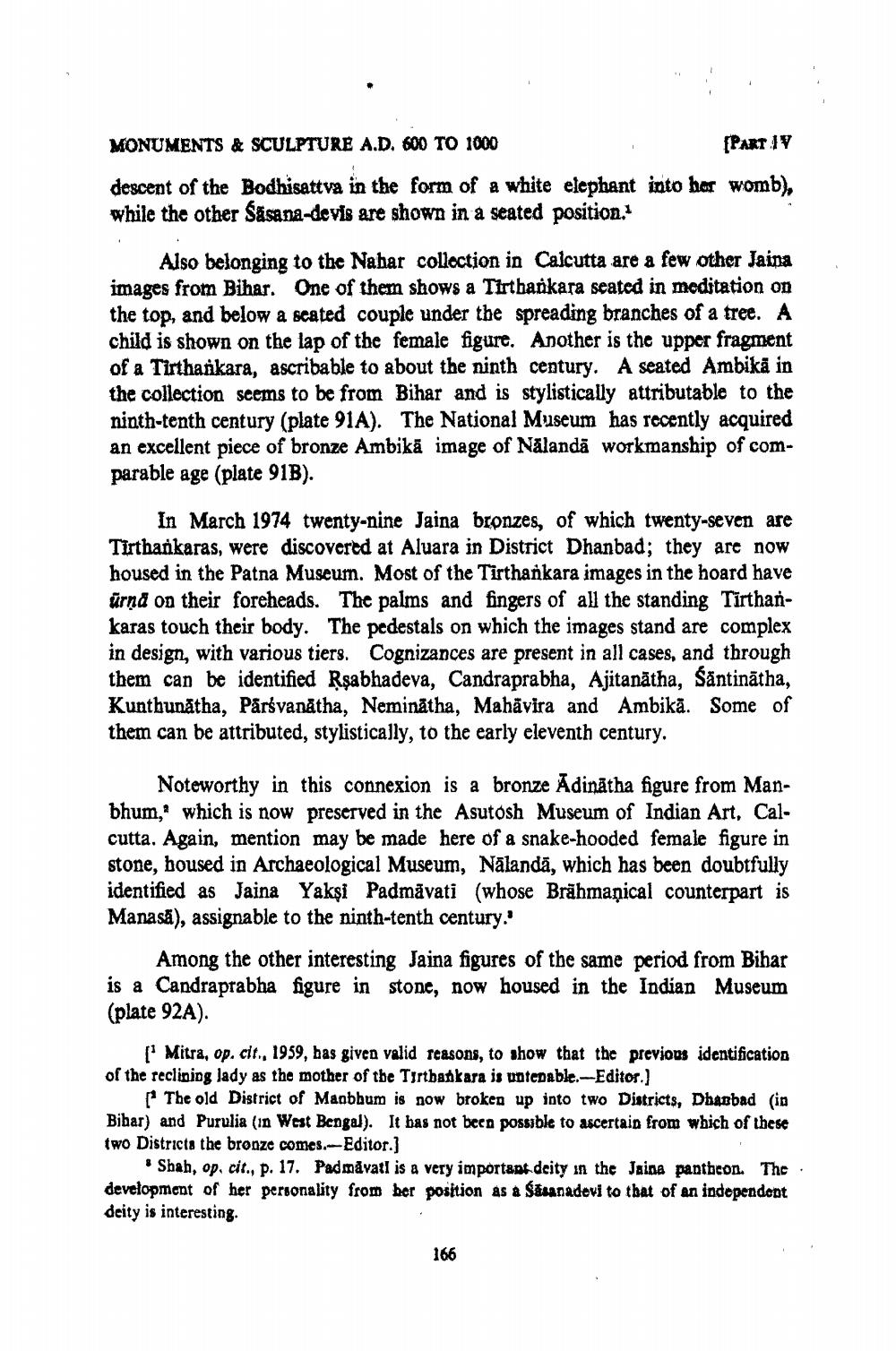________________
MONUMENTS & SCULPTURE A.D. 600 TO 1000
[PART IV descent of the Bodhisattva in the form of a white elephant into her womb), while the other Sasana-devis are shown in a seated position."
Also belonging to the Nahar colloction in Calcutta are a few other Jaina images from Bihar. One of thern shows a Tirthankara seated in meditation on the top, and below a scated couple under the spreading branches of a tree. A child is shown on the lap of the female figure. Another is the upper fragment of a Tirtharikara, ascribable to about the ninth century. A seated Ambika in the collection seems to be from Bihar and is stylistically attributable to the ninth-tenth century (plate 91A). The National Museum has recently acquired an excellent piece of bronze Ambikā image of Nalanda workmanship of comparable age (plate 91B).
In March 1974 twenty-nine Jaina bronzes, of which twenty-seven are Tīrthankaras, were discovered at Aluara in District Dhanbad; they are now housed in the Patna Museum. Most of the Tirthankara images in the hoard have ürņā on their foreheads. The palms and fingers of all the standing Tīrthankaras touch their body. The pedestals on which the images stand are complex in design, with various tiers. Cognizances are present in all cases, and through them can be identified Rşabhadeva, Candraprabha, Ajitanātha, Säntinātha, Kunthunătha, Pārsvanátha, Neminātha, Mahävira and Ambikā. Some of them can be attributed, stylistically, to the early eleventh century.
Noteworthy in this connexion is a bronze Adinātha figure from Manbhum, which is now preserved in the Asutosh Museum of Indian Art, Calcutta. Again, mention may be made here of a snake-hooded female figure in stone, housed in Archaeological Museum, Nālandā, which has been doubtfully identified as Jaina Yakşi Padmavati (whose Brāhmaṇical counterpart is Manasă), assignable to the ninth-tenth century.'
Among the other interesting Jaina figures of the same period from Bihar is a Candraprabha figure in stone, now housed in the Indian Museum (plate 92A).
p Mitra, op. cit., 1959, has given valid reasons, to show that the previous identification of the reclining lady as the mother of the Turtbankara is untepable. Editor.)
The old District of Manbhum is now broken up into two Districts, Dhanbad (in Bihar) and Purulia (in West Bengal). It has not been possible to ascertain from which of these two Districts the bronze comes.Editor.)
* Shah, op. cit., p. 17. Padmăvatl is a very important deity in the Jaina pantbcon. The development of her personality from her position as a Sasanadevi to that of an independent deity is interesting
166




